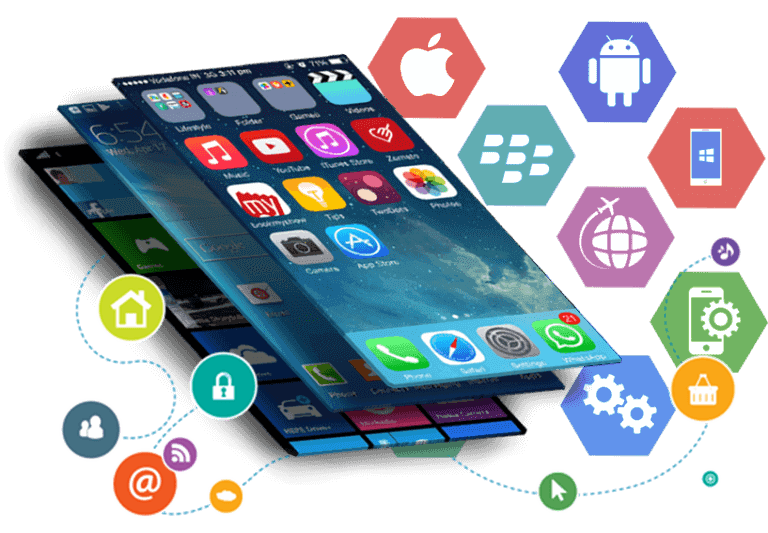Mobile application development software
Here’s a list of the best and most widely used mobile application development software tools (IDEs, frameworks, and platforms), categorized by native, cross-platform, and no-code/low-code options:
How to build a Mobile Application
Building a mobile application involves several stages—from planning and designing to development, testing, and launch. Here’s a step-by-step guide to help you build a mobile app, whether you’re a beginner or experienced.

Android App Development
Are you looking to learn Android app development, build a specific Android app, or do something else related to it?
Tools You’ll Need:
Android Studio (Official IDE)
Java or Kotlin (Kotlin is now the recommended language)
Learning Topics:
Setting up Android Studio
Understanding Activities and Fragments
Using XML for UI
Working with Views and Layouts
Networking (API calls with Retrofit/Volley)
Local storage (Room, SharedPreferences)
Jetpack Compose (modern way to build UI)
If You Want to Build an App:
What kind of app do you want to build? (e.g., To-do list, Chat app, Weather app)
What features do you need?
Any backend (Firebase? REST API?)?
Do you have experience with Kotlin or Java?
I can help you plan it, design the UI, write code, and debug it step by step.
If You Need Code Examples:
I can give you examples of:
Basic app structure
Navigation between activities
Fetching API data
Using RecyclerView
Authentication with Firebase

Benefits of Android Apps
Here are some key benefits of Android apps—especially from the perspective of developers, businesses, and users:
1. Open Source Platform
Android is based on open-source technologies (Linux + AOSP).
Developers can access source code and customize the OS for different devices.
2. Large Market Share
Android powers over 70% of smartphones globally.
Developing for Android gives you access to a massive user base.
3. Customizable UI
Android allows full customization of the user interface.
You can create unique and brand-specific designs.
4. Flexible Development Options
You can use Java, Kotlin, or even Flutter (Dart) to build Android apps.
Integration with a wide range of tools (e.g., Firebase, Android Jetpack).
5. Wide Range of Devices
Android apps run on phones, tablets, TVs, watches, and even cars (Android Auto).
Huge variety of devices means wider distribution.
6. Google Play Store Access
Easy to publish on the Play Store compared to iOS (fewer restrictions).
Built-in tools for monetization, analytics, and user management.
7. Low Development Cost
No high licensing fees.
Development tools like Android Studio are free.
8. Seamless Integration with Google Services
Easy integration with Google Maps, Gmail, Google Pay, YouTube, Firebase, etc.
9. Multiple Monetization Options
In-app purchases, ads (AdMob), subscriptions, or selling the app.
App Development: A Complete Overview
App development is the process of creating software applications that run on mobile devices like smartphones and tablets — typically for iOS, Android, or both.
Whether you’re a startup with an app idea or a business looking to go digital, here’s everything you need to know:
Types of App Development
| Type | Description | Tools/Tech |
|---|---|---|
| Native Apps | Built specifically for iOS or Android | Swift (iOS), Kotlin/Java (Android) |
| Cross-Platform Apps | Single codebase for multiple platforms | Flutter, React Native |
| Hybrid Apps | Web-based apps inside a native shell | Ionic, Cordova |
| Web Apps | Run in mobile browsers | HTML, CSS, JavaScript (PWA) |
App Development Process
1. Planning & Strategy
Define the app’s purpose and features
Target audience and platform (iOS, Android, both)
Market research and competitor analysis
Choose the right technology stack
2. UI/UX Design
Wireframes for structure
Prototypes for user flow
Design user-friendly and responsive interfaces
Tools: Figma, Adobe XD, Sketch
3. App Development
Frontend: What users interact with (UI, animations)
Backend: Server, database, APIs, authentication
Integration of push notifications, payments, etc.
4. Testing & QA
Functional testing (features work correctly)
Performance testing (speed, responsiveness)
Device and OS compatibility testing
Security testing (data protection)
5. Deployment & Launch
Submit to Apple App Store and/or Google Play Store
Follow platform-specific guidelines and review processes
Create app store descriptions, screenshots, privacy policy
6. Post-Launch Support
Monitor performance and crash reports
Fix bugs, optimize features
Roll out updates and enhancements
Collect user feedback for improvements